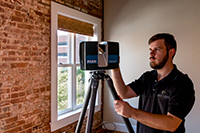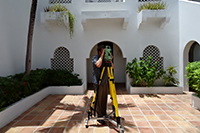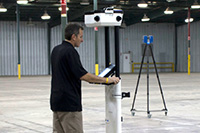No matter what industry you work in or how familiar you are with file formats in general, you’ll undoubtedly have encountered PDFs at some point or another. One of the most popular file formats around, PDFs are the perfect way to share and exchange documents. Despite their many advantages, however, they do come with some shortcomings. As typical as it may be to view PDFs, you’ll run into a variety of problems when trying to edit them.
The easiest solution? Convert PDF to CAD – but not without considering a few things first.
1- The Original: Can I use this?
The quality of the PDF file and the creation date are two crucial factors for usability. A file exported from AutoCAD just last year is likely to reflect the building geometry accurately. However, if you have hand-drawn blueprints created 70 years ago, there are probably mistakes in the drawings and renovations to the building. Additionally, plans with extensive redlines could also present problems.
The PDF to CAD conversions are a budget-conscious option in multiple scenarios. You will want to consider the building type and project expectations.
-
Before smaller projects, the owner will provide recent drawings.
-
For many hospital projects, good compliance with JCAHO standards offers a high level of confidence in the accuracy of drawings on file.
-
In large projects, architects often have been able to visit the site and have verified the drawings on hand are adequate.
The reality is once the project has started, many clients using converted drawings discover too much has changed. It equates to a significantly extended timeline and the extra expense of creating two different drawing sets. Ideally, you have plenty of time (at least six weeks) to conduct an as-built survey if it is necessary because of inaccuracies.
2- The Process – What do I need?
Although many paid applications exist to simplify the process of converting a scanned paper design – if you need the AutoCAD file to represent your paper version – your best bet is still a manual process. There is no substitute for a trained professional with experience. It means a complete conversion, typical architectural and engineering drafting conventions are applied, and files will be immediately editable in your CAD or BIM application without requiring additional work. Professional services also give you more control over the final output and file types.
-
Within 2D drawings, DWG files support elements like dynamic blocks and line weights.
-
Use the 2D drawings as the basis for a 3D Revit model instead. Think of generating a 3D model like actual construction. We start with the foundation level and build up one virtual floor at a time.
-
Consolidate drawings or limit the scope to specific sheets. For example, if you only need the Floorplans and Reflected Ceiling Plans, skip the MEP – you specify which scope elements to include.
No matter which elements you include or the deliverable you choose, professional services begin with an analysis phase. For each building, you will have a report that details the inventory of pages, duplicates, and versions provided, as well as any gaps/missing pages identified.
3- The Accuracy – Will it be right?
So, what if there are mistakes in the originals? The short answer is that the same error will exist in the new drawing. While we are completing the conversion, we are not acting as designers or engineers in any way.
-
Our commitment is to replicate your original drawings in AutoCAD. So, if a dimension is wrong or words misspelled in the original, the inaccuracy will be duplicated in the CAD file.
-
In the case of redlines, we can either reproduce redline as drawn or use redline instructions (markups) to update the content of the drawing.
You may choose to have us visit the site to substantiate your floorplans and appraise the building layout for indications of renovations. For example, you may have us compare existing plans by providing a report with room counts, room placement confirmations, length of straight hallways, length and width of open areas, and a list of variances or missing buildings. We could also complete an as-built survey if floorplans do not reflect the existing site conditions.



